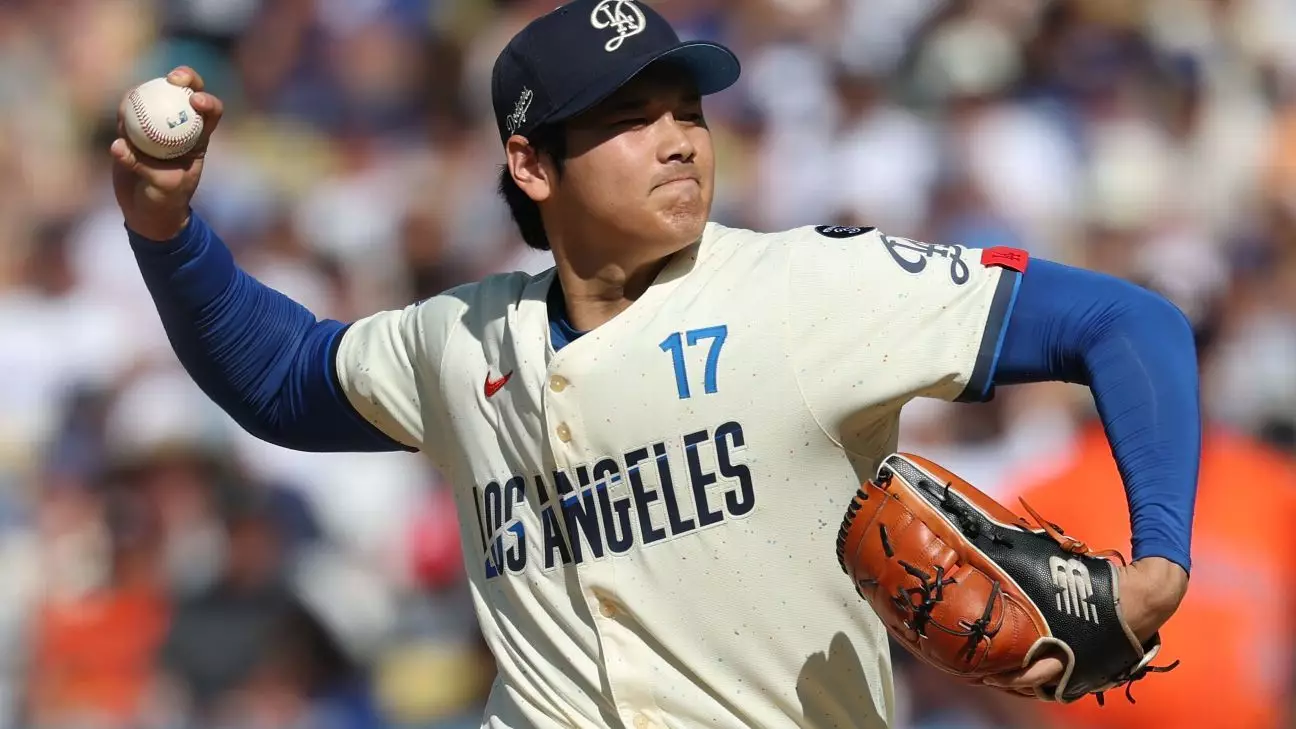Shohei Ohtani’s recent performance on his 31st birthday is a poignant reminder of his relentless pursuit of excellence, resilience, and adaptability in Major League Baseball. Even after undergoing significant elbow surgery, Ohtani demonstrates that the greatest athletes are not just born with talent but are sculpted by perseverance and an unyielding drive to improve. His latest outing against the Houston Astros underscores a crucial shift in his pitching philosophy—moving away from raw power to controlled mastery. This evolution signals a maturing athlete who recognizes that true dominance stems from precision and consistency rather than sheer velocity.
Historically celebrated for his extraordinary speed, Ohtani’s performance this season reveals a strategic refinement. He threw only one fastball over 100 mph—a 100.9 mph pitch fouled off by Victor Caratini—highlighting his focus on command and pitch placement rather than overpowering hitters with velocity alone. This approach not only prolongs his effectiveness but also reduces the risk of injury, especially considering his past elbow troubles. His deliberate shift signals an understanding that mastery in baseball isn’t solely measured by maximum effort but by intelligent execution and adaptability to game situations.
The Art of Pitching in the Modern Era
Ohtani’s performance exemplifies a broader transformation within professional baseball. Today’s pitchers are increasingly valuing control and deception over raw speed. It’s about mastering a repertoire of pitches—fastballs, cutters, sliders, and changeups—and deploying them judiciously. Ohtani’s ability to strike out three batters swinging, while hinting at increased command and feel for his pitches, indicates he’s leaning into this modern philosophy. His efficiency—throwing 31 pitches, 21 for strikes—further emphasizes that he is pitching smarter, not harder.
Baseball pundits and coaches are gradually recognizing that the days of relentless fastball dominance are waning, replaced by a strategic equilibrium where control and pitch diversity reign supreme. Ohtani’s recent outings affirm this shift, suggesting he is adapting his approach for sustained success. His ability to throw controlled fastballs, maintains high effectiveness without overexerting, extending his resilience and allowing him to pitch more innings over the long season.
The Dual Threat: Pitching and Hitting — A Rare Phenomenon’s New Phase
While Ohtani’s pitching arc continues to ascend, his role as a hitter remains equally impactful. His at-bat against Astros closer Josh Hader—singling to lead off the ninth—reminds us why he is considered baseball’s unicorn. His disciplined approach at the plate, recognizing pitches, and making contact demonstrates that his offensive skills are not merely supplementary but integral to his overall value.
Ohtani’s comments about feeling average at the plate point to a vital insight: even in his multi-faceted brilliance, he is human. His acknowledgment that he’s adjusting and recognizing pitches reflects a competitive mindset eager to elevate his game further. This duality—being both a top-tier pitcher and a formidable hitter—is what makes Ohtani a true once-in-a-generation athlete. Yet, it also exposes the immense pressure he faces to excel at both ends continuously. Balancing these roles requires not just physical skill but mental toughness, discipline, and strategic forethought.
The Cultural and Personal Significance of Ohtani’s Journey
Celebrating his birthday in the limelight, Ohtani’s humility shines through amidst the accolades. The simple gesture of the grounds crew creating “HB Sho” in the dirt, and the modesty expressed about his birthday, humanize an athlete often viewed through a larger-than-life lens. His perspective—that he prefers to treat every day like any other—underscores a grounded approach that is vital for high performers subject to immense public scrutiny.
Furthermore, Ohtani embodies a cultural bridge—merging Japanese athletic discipline with the relentless competitiveness of American baseball. His journey through injury, recovery, and now a resurgent season symbolizes resilience and the relentless pursuit of greatness across two worlds. By continuing to improve his command, refine his pitch repertoire, and contribute offensively, he is rewriting what it means to be a baseball superstar. He exemplifies how humility, adaptability, and consistent effort can elevate an athlete beyond raw talent.
Ohtani’s ongoing evolution in MLB challenges conventional notions of power sports and underscores the importance of strategic mastery. As he continues to redefine what is possible on the mound and at the plate, he not only enriches the game but also sets a new standard for perseverance and versatility in sports.

